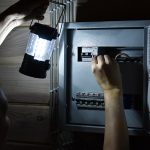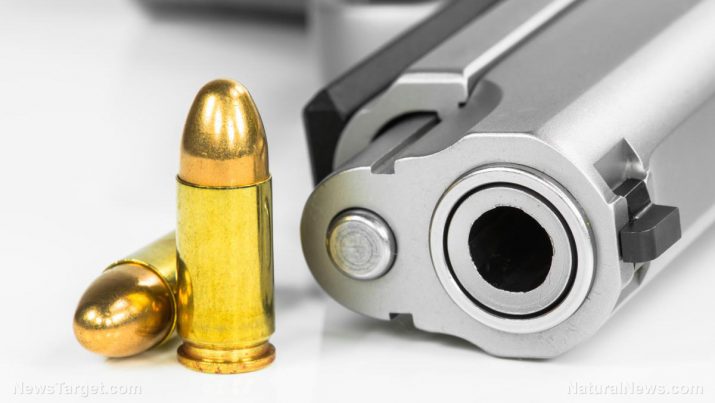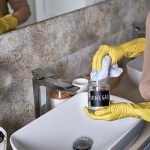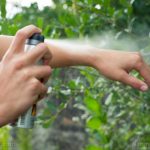
9 Materials you can use to stop a bullet
Tuesday, July 18, 2023 by Olivia Cook
http://www.naturalnewstips.com/2023-07-18-9-materials-to-stop-a-bullet.html

Many materials can stop bullets, but they are not all created equal – some are best for armor and some are best for cover. There are also some that have yet to be truly tested.
Below are examples of intermediate barriers that can deflect bullets from their intended trajectory and impede their performance by forcing them to shed velocity and deform or even break into pieces.
Your car – the body, doors, engine block and windows offer very different results
Testing by firearm instructors suggests that auto glass may change the trajectory of a bullet, BUT it won’t stop it – and neither will the dashboard or steering wheel.
The body of your vehicle, like the door, might stop bullets depending on the type of bullet and the angle of fire.
Engine blocks have always been accepted as a good cover and arguably the only part of a vehicle you can consistently rely on to stop bullets, according to Jacob Paulsen, founder and president of ConcealedCarry.com.
Filing cabinets full of paper
There has actually been a lot of research on file cabinets due to their general availability for cover in a workplace under active shooter situation.
Research conducted by ConcealedCarry.com suggested that an empty file cabinet will not stop most handgun rounds, but a filing cabinet full of paper is likely to be effective.
Sandbags
When filled with sand or dirt and placed in strategic positions, sandbags can provide protection from small arms fire and shrapnel.
The dense layers of sand or soil rapidly deplete projectiles of energy until they come to rest harmlessly inside the sandbag. At worst, bullets penetrate them only after having lost much of their velocity.
You can also use sandbags to reinforce or fortify common structures. Some sandbags can be piled in front of a window or door during times of trouble to provide protection from bullets or to prop up plywood coverings to prevent entry.
Even a basic U- or V-shaped barrier of sandbags can prove to be an excellent defense in times of civil unrest.
Masonry – brick, concrete, stone
Brick, concrete and genuine stone are conventional, durable and long-lasting exterior and indoor construction materials that typically exhibit excellent bullet-resistant properties, and will usually stop small-caliber handgun rounds entirely.
The only downside to these materials is that they degrade comparatively quickly with each bullet hit and the fractures that radiate out from each impact can lessen the resistance of the nearby material.
Steel/aluminum plates
Often regarded as one of the better bullet-resistant materials available for reinforcing or building a wall, steel is used for purpose-made armor in both vehicular and individual applications because it typically endures multiple-bullet hits quite well with very little degradation.
The downside is that steel plates are also extremely heavy and difficult to fabricate or modify on a work site.
And like most other metallic armors, steel is highly vulnerable to high-velocity projectiles and extremely vulnerable to high-velocity armor-piercing projectiles. One must also be cautious of spalling (the breaking away of a concrete surface), which occurs on a major hit or near-penetration. Tiny fragments of the steel de-laminate and break off with lethal velocity on the back side of the plate, potentially injuring or even killing people struck by them.
Aluminum is best used as a component in composite armor solutions.
Polycarbonate
Due to its exceptional strength, impact resistance and toughness, bullet-resistant polycarbonate is a unique and valuable material.
Polycarbonate has the advantages of being optically transparent, lightweight and shatterproof. Additionally, it has strong dielectric strength, low moisture absorption and excellent UV protection.
These characteristics make polycarbonate sheet one of the best materials for resisting both physical assaults and multiple-shot ballistic assaults.
Kevlar
Made of tightly woven synthetic fibers that can endure incredible amounts of punishment, kevlar is the lightest material for stopping bullets and used all around the world by both militaries and civilians for ballistic protection. As far as armors go, the plates are also lightweight, versatile, durable and heat resistant. (Related: NYC residents are buying body armor in record numbers as lawless Democrats defund police and protect violent criminals.)
Polyethylene
Ultra-high-molecular-weight polyethylene is a highly durable, water-resistant material that won’t degrade as fast as ceramic or kevlar.
In overall performance, polyethylene is the best material to stop a bullet. Polyethylene can take multiple hits where a plate of ceramic or kevlar would shatter or crack.
While it isn’t as light as kevlar, its strength-to-weight ratio is about 15 times that of kevlar. The material is used to make plates similar to steel plates, only a lot lighter.
Non-Newtonian fluids
Researchers in Poland have developed a liquid that’s super-light and flexible. Upon impact, its specially designed shear-thickening fluid, or STF, turns into a solid that is more comfortable than kevlar.
Created by the Moratex Institute of Security Technologies, the liquid is known as non-Newtonian fluid – which only changes its structure according to temperature or pressure fluctuations.
In other words, they can quickly change from liquid to rock-hard solid when they’re hit with something forceful, such as a stray bullet.
Visit SelfDefense.news for more related stories.
Watch this video to learn about a simple trick to bulletproof your home for SHTF.
This video is from the Daily Videos channel on Brighteon.com.
More related stories:
New York bans most civilians from wearing bulletproof vests.
More and more Americans are bulletproofing their cars as crime and lawlessness worsen.
Home security: 3 Ways to protect your homestead.
Looking to improve your home security? Here are 25 things you can do right now.
Sources include:
Tagged Under: Tags: aluminum plates, body armor, bullet proof, chaos, fiberglass, Gear, guns, intermediate barriers, kevlar, non-Newtonian fluids, panic, polycarbonate, polyethylene, preparedness, prepper, prepping, sandbags, self-defense, SHTF, steel plates, survival, survival gear, tips
RECENT ARTICLES


9 Materials you can use to stop a bullet
By Olivia Cook

DIY cleaning tips: 8 Surfaces to avoid if you’re cleaning with vinegar
By Zoey Sky

With malaria cases on the rise, here are some NATURAL ways to prevent mosquito bites
By Ethan Huff

Digital spy: Study reveals phone apps could be hiding spyware that can leak personal data
By Zoey Sky
COPYRIGHT © 2017 NATURAL NEWS TIPS


